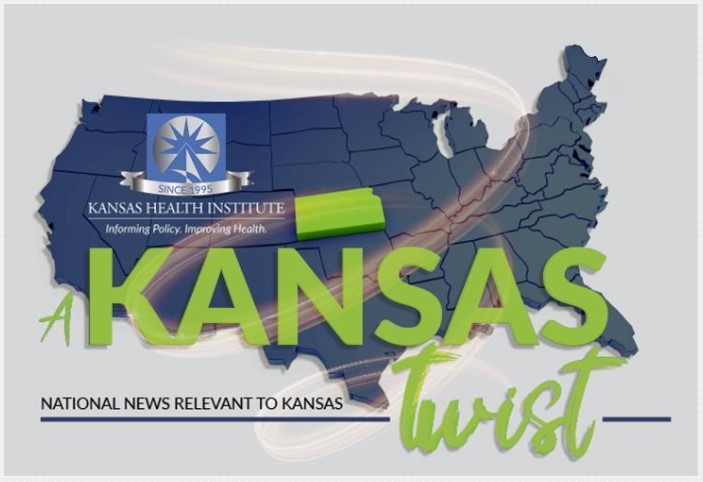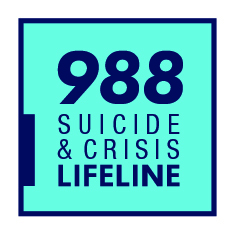This edition of A Kansas Twist is the second of a two-blog series covering suicide prevention in rural areas of the United States and Kansas. The first blog focuses on federal efforts, while this second blog focuses on state-level approaches, policies and programs that Kansas policymakers and other stakeholders may consider when working to reduce suicide rates in rural communities. It follows the recently published issue brief Urban-Rural Differences in Suicide Rates and Leading Means in Kansas.
Sign up here to receive these summaries and more, and also follow KHI on Facebook, Twitter and LinkedIn. Previous editions of A Kansas Twist can be found on our ARCHIVE PAGE.
Rates of suicide, particularly by discharge of firearms, are higher in the most rural parts of Kansas, known as Frontier counties. While federal and state governments provide funding and resources for suicide prevention, rural-specific suicide prevention priorities and plans are limited. State suicide prevention initiatives in Kansas are spread across several entities, including the Kansas Department of Health and Environment (KDHE), the Kansas Department for Aging and Disability Services (KDADS), community mental health centers and non-governmental organizations such as Kansas Suicide Prevention HQ.
With the authority and responsibility to protect public health, states play a substantial role in suicide prevention efforts. Nearly all states and U.S. territories, including Kansas, publish a state suicide prevention plan that provides data and strategic direction for suicide prevention efforts.
Grants and Funding
States can function both as grant recipients — from the federal government — and as grantors — down to local governments or organizations. Some states, such as Colorado and Nevada, have formed distinct units within their state government to coordinate and implement suicide prevention efforts. The Colorado Department of Public Health and Environment, a Comprehensive Suicide Prevention Program grantee, funds numerous community suicide prevention efforts, including the Zero Suicide program in several Colorado-designated Rural and Frontier counties. Through funding opportunities and directives, states can prioritize specific suicide prevention goals and populations, including rural communities.
Convener
State agencies also may take the lead in implementing statewide initiatives, through partnerships with private organizations and other governmental agencies. Suicide prevention commissions, such as the one established in Michigan by the state legislature in 2020, are one mechanism by which states institutionalize statewide suicide prevention efforts. The diverse, 24-member Michigan commission is explicitly required to focus on demographics showing the highest rates of suicide in the state, and must, at minimum, consider “rural and urban areas” along with other characteristics, including race, sex, occupation, age and socioeconomic status.
Initiatives for Specific Rural Populations
While suicide prevention efforts often are designed to broadly apply to all populations, some initiatives work to meet the unique needs of specific populations that may be especially present in rural communities, such as veterans and older adults. Here, two such efforts — those focused on suicide prevention efforts for farmers and ranchers and for gun owners — will be described.
Farmers and Ranchers
In rural Kansas, farming and agriculture play a central economic and cultural role. The Kansas Department of Agriculture established a website and compilation of resources — Kansas Ag Stress Resources — to support at-risk individuals in agriculture, including those with mental health challenges. Elsewhere, the Suicide Prevention Coalition in Maryland launched a farmer-focused prevention website and resources called Save a Shore Farmer.
Some initiatives blend a focus on veteran mental health needs and agriculture. With direction from Congress, the Veterans Health Administration Office of Rural Health developed the Veterans Affairs Farming and Recovery Mental Health Services (VA FARMS) pilot program at nine Veterans Affairs (VA) medical centers, none in Kansas, to provide veterans with agricultural vocational training and mental health care services from licensed providers. While not a VA FARMS program, the Kansas-based Servicemember Agricultural Vocation Education (SAVE) Farm Program operates on a 308-acre farm near Riley and Manhattan providing hands-on agriculture and agribusiness training and education, integrated with behavioral health therapy, with an emphasis on service members, veterans and their families. In 2020, the SAVE program joined the Governor’s Challenge to Prevent Suicide Among Service Members, Veterans, and Their Families.
Gun Owners
The Kansas Suicide Prevention Plan includes an objective to “support local efforts to work with gun shops, firearms owners, shooting ranges, etc., to promote safe gun storage.” Potential activities include suicide prevention training for hunting education trainers and engagement with local gun shops, shooting ranges and law enforcement to develop action plans. In Vermont, the state legislature mandated the Department of Mental Health to collaborate with members from the gun ownership community and the Vermont Suicide Prevention Center to launch and run the Vermont Gun Shop Project. This statewide awareness and prevention project works directly with gun owners to create prevention materials and resources for members of the firearms community. The Colorado Office of Suicide Prevention runs a similar program by the same name, with resources for the gun owner community in English and Spanish, partnership with the Colorado Firearm Safety Coalition, and a map of temporary firearm storage locations — to safely store firearms out of the home for a period of time to prevent unsafe access.
Suicide Prevention in Kansas
Suicide prevention efforts in Kansas are spread across several offices and departments. The state suicide prevention plan, published by KDADS, serves as a strategic guide. The plan features suicide data from KDHE and includes an objective to “develop and support culturally informed suicide prevention efforts for diverse populations.” Targeted outreach to identified at-risk populations, including Rural and Frontier Kansans, is one included action for this objective. Additionally, the Kansas Department of Education publishes a school-based prevention toolkit, and a Youth Suicide Prevention Coordinator position was established in 2019 by House Bill 2290 and is housed in the Attorney General’s Office.
The challenges and opportunities unique to rural and frontier counties are one focus of the recently established Office of Rural Prosperity, with rural health care access identified as a priority. At a community listening event in the Northwest region of the state, rising suicide rates were identified as an area of concern.
The statewide nonprofit organization Kansas Suicide Prevention HQ, which houses the Kansas Suicide Prevention Resource Center, offers resources and trainings for suicide prevention in the state. Additional nonprofit organizations such as the Kansas chapters of the National Alliance on Mental Illness (NAMI Kansas) and American Foundation for Suicide Prevention (AFSP Greater Kansas) advocate, educate and provide resources to support mental health and suicide prevention. Community mental health centers (CMHCs) provide mental health services throughout the state. For many Rural and Frontier communities, however, the closest CMHC may be many miles away — particularly in western Kansas.
The Kansas Prevention Collaborative, a partnership of state, educational and provider agencies convened by KDADS, makes funding available to local coalitions and other organizations through the federal substance abuse block grants. In place since 2015, the collaborative has awarded multiple rounds of competitive grants “to expand prevention efforts to be more inclusive of mental health promotion, suicide prevention and problem gambling education and awareness, as well as to increase the availability of resources to adequately fund local-level prevention.” In the most recent round of grants, 12 local coalitions received funding totaling $534,000 to support their development and training in using the Strategic Prevention Framework. Three grantees are in Rural counties, based on the KDHE Peer Groups, and none are in Frontier counties.
On Sept. 21, 2021, the Kansas Suicide Prevention Coalition was launched with the mission to “champion suicide prevention for all Kansans through equitable access to partnerships, advocacy, resources, ideas, and data.” In addition to connecting suicide prevention groups, local coalitions and organizations, the statewide coalition includes individuals with lived experience and aims to incorporate input from diverse sectors.
Conclusion
Rural communities are not simply smaller versions of cities, and suicide prevention efforts that are designed, implemented and evaluated in cities cannot always be copied into rural communities. Combining all non-metropolitan communities into a single rural group often fails to recognize unique factors and challenges at differing levels of rurality.
In recent years, some rural-focused resources and policy options have been developed. Despite this, rural-focused suicide prevention efforts at the national and state levels remain limited. To reduce suicide in rural communities, suicide prevention policies and programs may need to be specifically tailored to meet the unique needs, assets and cultural contexts of rural populations.

